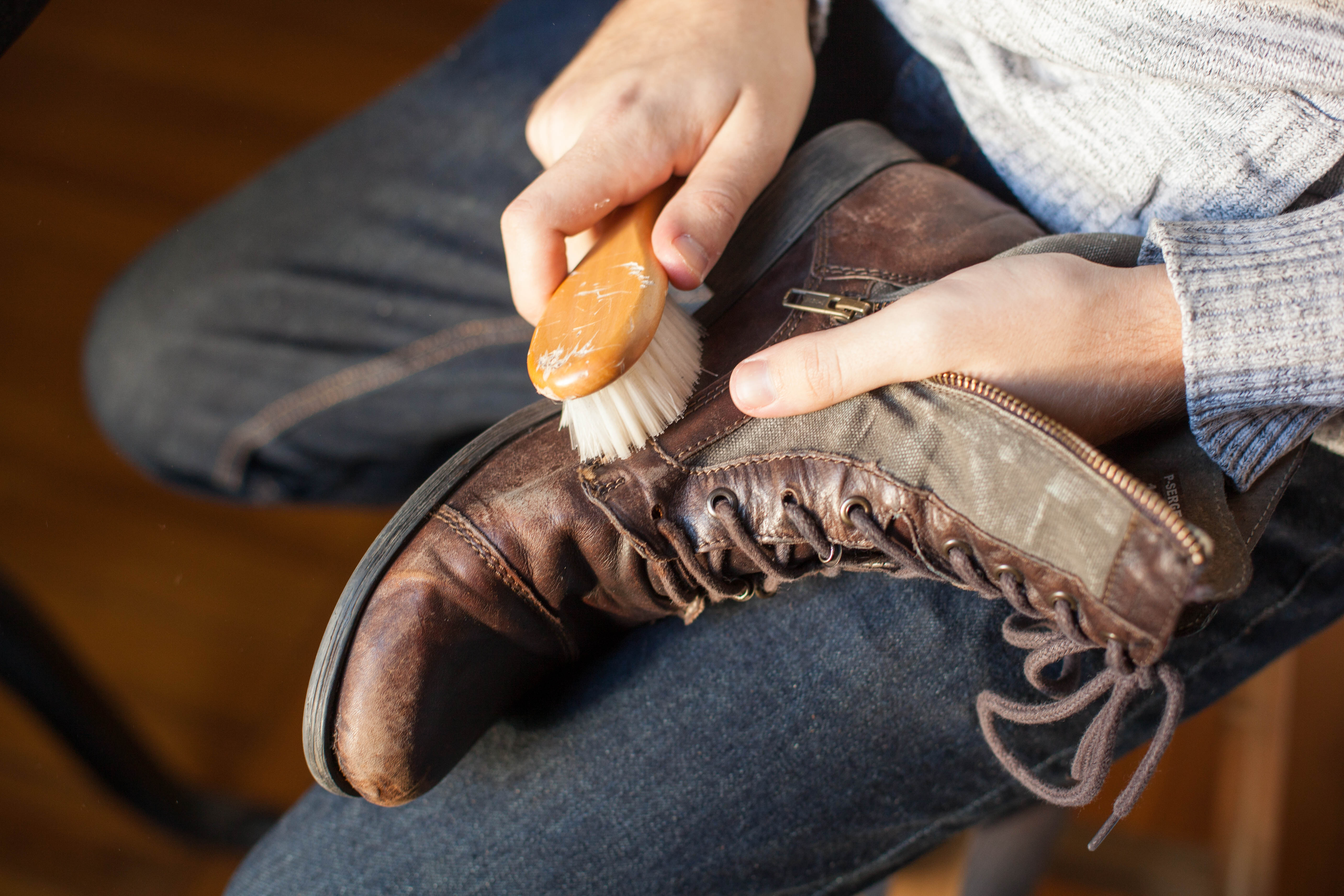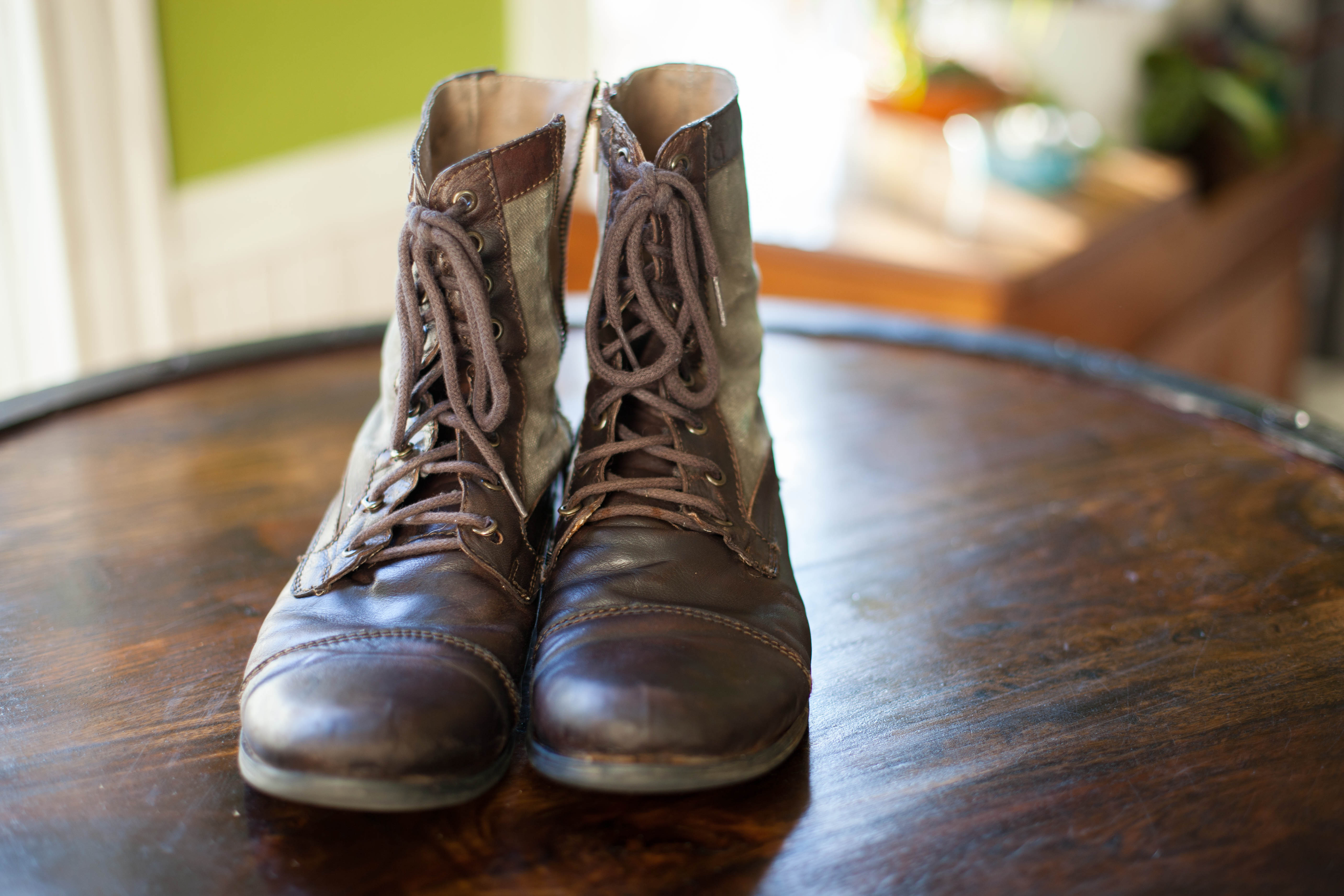How To Clean and Care For Leather Boots

The best part of investing in quality leather goods is how well they age. But how your leather ages really depends on how well you treat it. Treat them poorly and they’ll fall apart, but if you’re sure to take care of them and give them a quick clean-up about every 6 months, not only will they age beautifully, they’ll also last you a lifetime.
But before we jump in and talk about the right way to care for your leather goods, it’s important to know a few basic things about leather.
How Leather Is Made – Cliff Notes Style:
This is a condensed version. If you’d like to know more about the types of leather and what to look for, visit my blog: Gold Bark Leather
Leather is made from animal hide, in most cases cowhide, and is an organic material. This means that it’s subject to change based on its environment. To prevent change, or in this case decay, the animal hide goes through a complex process and comes out the other side as leather. While each tannery has its own specific process, these processes can be summed up by two categories: Chrome Tanned and Vegetable Tanned. Chrome tanned leather is created with chemicals, while vegetable-tanned leather is created with tannins and other plant materials, like tree bark.
It’s super important that you know how your leather item has been tanned because it will dictate what kinds of products you use to maintain your leather. Telling the difference between the two can be a little tricky, but here’s a shortlist that will help you differentiate.
 Chrome Tanned vs. Veg Tanned
Chrome Tanned vs. Veg Tanned
- Feel. Chrome tanned is thin and stretchy, while veg-tanned tends to be more sturdy and less spongy feeling. This isn’t a foolproof way because Chrome Tanned Leather products are usually backed by something to make it less thin and less stretchy, which can make it hard to tell.
- Price. Chrome tanned leather is much less expensive than vegetable-tanned leather. This is because it takes a lot less time to make. If you bought an inexpensive leather item, it may be chrome tanned leather.
- Color and Grain. This is the easiest way to tell what kind of leather your item is. Chrome tanned leather has a consistent color throughout. Vegetable Tanned Leather, on the other hand, shows the grain of the animal and generally has a depth of color.
- Aging. Ideally, you would know how the leather was tanned before you got to this point, but if you’ve had a leather item for a while and aren’t sure, this is a good way to tell. Vegetable-tanned leather is a more organic material than chrome tanned leather, so they age differently. As vegetable tanned leather ages it will get dark and form a patina, get looser, and form to the shape of what it’s around, i.e. your foot if it’s a shoe. Chrome tanned does this too, to some extent, but only slightly.
How to keep your leather boots looking sharp
If you have veg-tanned leather, maintaining your leather items is all about replenishing the waxes and oils that were put into the leather originally. The oils keep the leather soft and prevent it from cracking while the wax keeps the leather water-resistant and helps hold the oils in. Chrome tanned leather is a bit different. Oils will actually clog the pores, so you’ll only want to apply wax or some sort of spray that will waterproof it.
If you really want to be on top of keeping your leather goods at peak performance, I suggest reapplying these things once every six months. However, you can also do this whenever you feel like they are getting a bit dirty and losing their luster.
What You Need:

A Soft Bristle Brush. Try to avoid anything that will damage the surface of the leather (hard bristles) or anything that will rub the dirt into the leather (cloth). Also, don’t let your dog eat the brush… like I did.
Oils and Wax. You can get these products separately, or you can buy them combined. I use Obenauf’s Leather Oil, which contains beeswax. If you have veg tanned leather, this is the kind of stuff you want to use, because it’s natural. Again, if you have Chrome Tanned Leather, do not get something with oils in it, just something that will protect the surface. Shoe wax works well for chrome-tanned leather.
An old t-shirt. Any cloth will work for this, but I try to avoid cloth with large fibers (like a towel) that will leave streaks in the drying wax.
Applying Oils and Wax

Step 1: Before applying the oils and wax, you need to make sure that your leather is clean. All that requires is briskly brushing the dirt off with your soft bristle brush. If you are having trouble with a particular area that may have some dirt worked into the leather, you can lightly wet the area and then brush it clean. Make sure you do not soak the area when you are doing this though.

Step 2: Once your leather is clean and (if you used a bit of water to clean a certain area) dry, it’s time to apply the oils and waxes. If you just have oil, you’ll apply it the same way I’m about to apply Obenauf’s. If you are using oil and wax, just make sure to apply the oil first, then the wax. Apply a generous amount of whatever you are using to your leather. As you apply it work it in slowly to the leather with your cloth, or dauber if provided, in a circular motion.

Step 3: When the entire item has been covered and you can see parts of the wax start to dry, run the cloth over the leather briskly until the wax starts to shine, making sure not to generate too much heat as you do this because it will actually darken the leather, which is another reason not to use a cloth with large fibers.
And just like that whatever leather item you just cleaned up is ready to go for the next six months… especially if you follow these leather storage tips!

Preventing your leather boots from getting damaged
Avoid water like the plague
Ok, so if you’re on your way home from work and you get a little rain on your leather as you walk to the car, that’s no big deal. But when leather gets soaked, bad things happen. First, if your item uses glues in certain areas instead of stitching the glue will start to loosen. Second, when leather dries after being soaked, it holds whatever shape it is in. This makes it very easy to permanently stretch it out. Finally, all that water flushes the oils out (again, this only applies to Veg Tanned Leather) and when there aren’t many oils in the leather, the surface layer will crack. This too is irreversible damage. Using heat to dry out wet leather will also cause it to get too dry and crack, so let your leather items dry out naturally.
Avoid the sun like you would avoid something you mildly dislike, like Chihuahuas.
This applies to storage, not use, and isn’t as big of a deal as the previous tip. Leather, and especially if it’s veg-tanned, gets darker the longer it’s exposed to the sun. This is actually something I love about veg-tanned leather and am glad to see it happen. The bigger issue is the leather getting too hot if left in the sun long and drying out.
Recap
I’m hoping all this information has got you thinking ‘these leather shoes are going to look mighty fine in a few months instead of being overwhelmed and thinking ‘crap, these shoes are doomed.’ Even though I spent a while explaining how to care for your leather the actual process/rules isn’t long.
- Spend 5 minutes every 6 months cleaning and reapplying oils/waxes
- Avoid excessive amounts of water
- Store in a dark area
Follow those three rules and you’re guaranteed to have some dang good-looking leather items. For more leather maintenance tips, check out our article on how to remove ink from leather.










